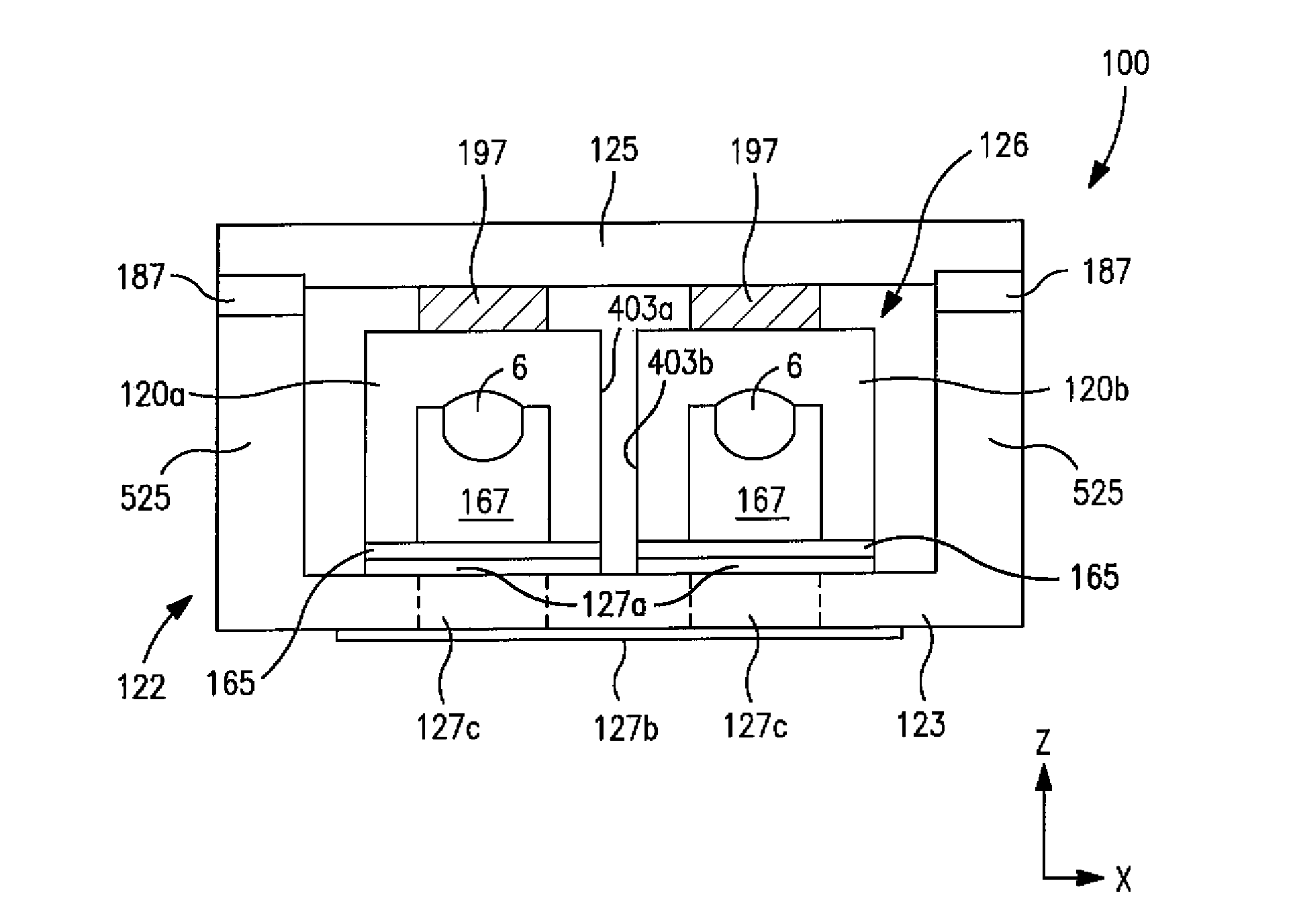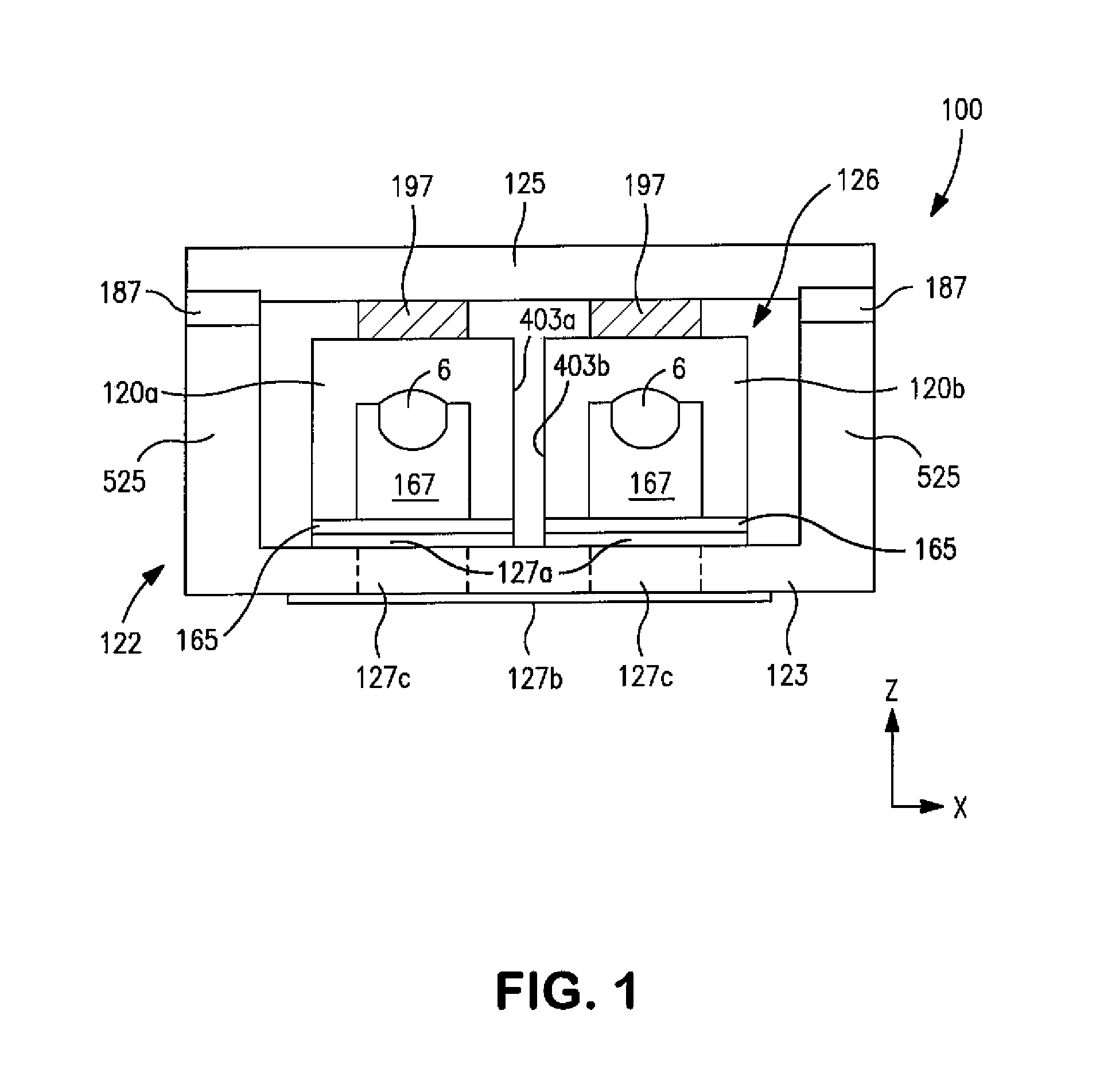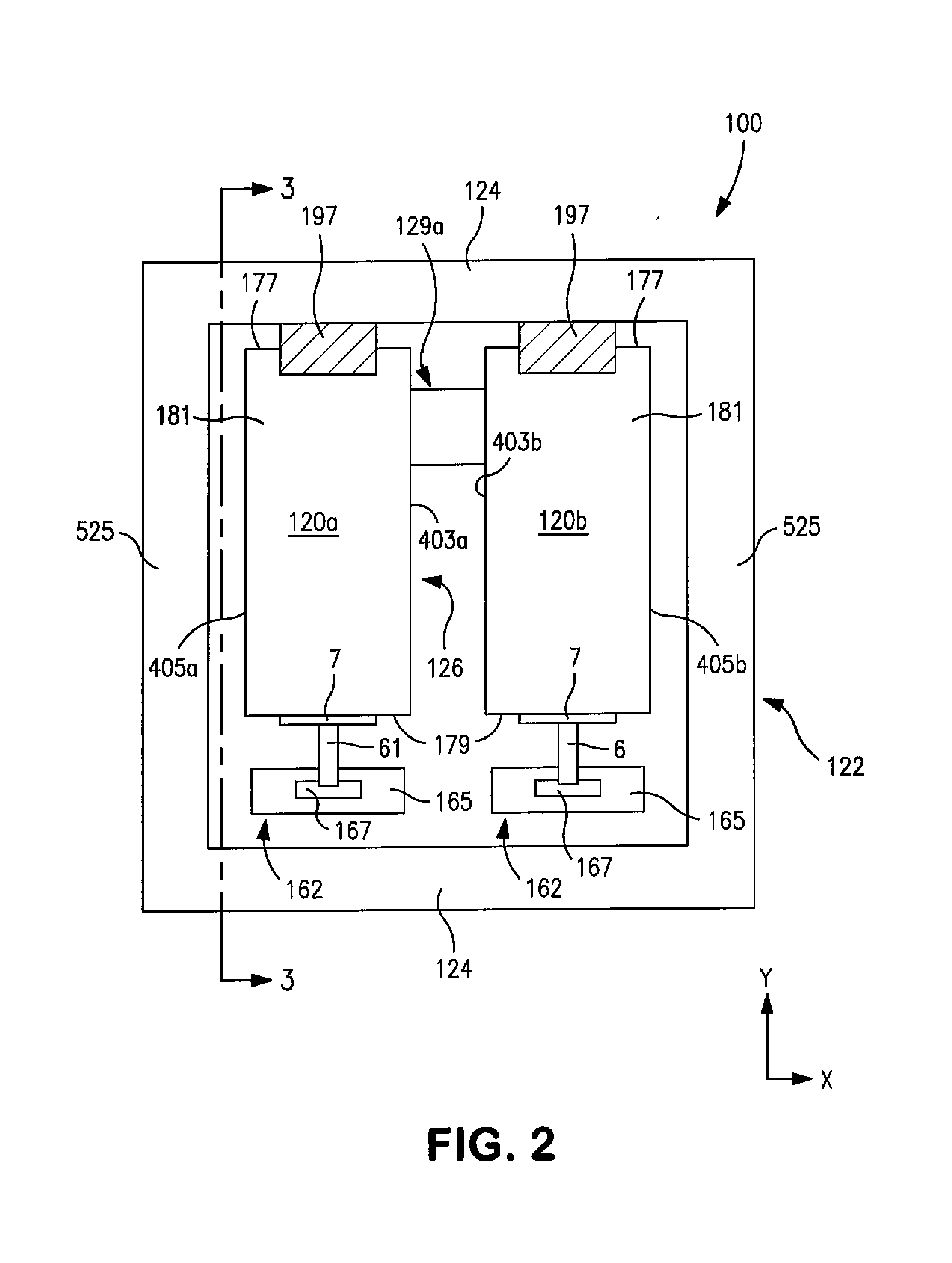Multi-Anode Solid Electrolytic Capacitor Assembly
a solid electrolytic capacitor and multi-anode technology, applied in the direction of electrolytic capacitors, fixed capacitor details, fixed capacitors, etc., can solve the problems of poor stability of such solid electrolytes at high temperatures, poor electrical performance, and problems that remain
- Summary
- Abstract
- Description
- Claims
- Application Information
AI Technical Summary
Problems solved by technology
Method used
Image
Examples
example 1
[0080]A tantalum anode (4.80 mm×5.25 mm×2.60 mm) was anodized at 30V in a liquid electrolyte to 150 μF. A conductive polymer coating was then formed by dipping the entire anode into a poly(3,4-ethylenedioxythiophene) (“PEDT”) dispersion (Clevios™ K, solids content of 1.1%). The part was then dried at 125° C. for 20 minutes. This process was repeated 10 times. Thereafter, the part was dipped at a speed of 0.1 mm / s into a PEDT dispersion (solids content of 2.8%) so that the dispersion reached the shoulder of the part as shown in FIG. 3. The part was left in the dispersion for 10 seconds, dried at 125° C. for 30 minutes, and then cooled down to room temperature. This process was repeated 5 times. The part was then coated with graphite and silver. A copper-based leadframe material was used to finish the assembly process. A single cathode connective member was attached to the lower surface of the capacitor element using a silver adhesive. The tantalum wire of the capacitor element was th...
example 2
[0082]A tantalum anode (4.80 mm×10.50 mm×2.60 mm) was anodized at 30V in a liquid electrolyte to 150 μF. A conductive polymer coating was then formed by dipping the entire anode into a poly(3,4-ethylenedioxythiophene) (“PEDT”) dispersion (Clevios™ K, solids content of 1.1%). The part was then dried at 125° C. for 20 minutes. This process was repeated 10 times. Thereafter, the part was dipped at a speed of 0.1 mm / s into a PEDT dispersion (solids content of 2.8%) so that the dispersion reached the shoulder. The part was left in the dispersion for 10 seconds, dried at 125° C. for 30 minutes, and then cooled down to room temperature. This process was repeated 5 times. The part was then coated with graphite and silver. Multiple parts (50) were then formed from the capacitor elements in the same manner described above.
[0083]The parts of Examples 1 and 2 were then tested for electrical performance (i.e., capacitance (“CAP”) and equivalent series resistance (“ESR”)), before and after “vibra...
PUM
 Login to View More
Login to View More Abstract
Description
Claims
Application Information
 Login to View More
Login to View More - R&D
- Intellectual Property
- Life Sciences
- Materials
- Tech Scout
- Unparalleled Data Quality
- Higher Quality Content
- 60% Fewer Hallucinations
Browse by: Latest US Patents, China's latest patents, Technical Efficacy Thesaurus, Application Domain, Technology Topic, Popular Technical Reports.
© 2025 PatSnap. All rights reserved.Legal|Privacy policy|Modern Slavery Act Transparency Statement|Sitemap|About US| Contact US: help@patsnap.com



